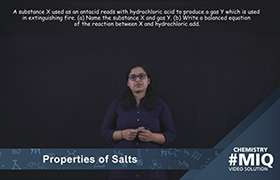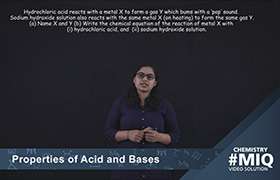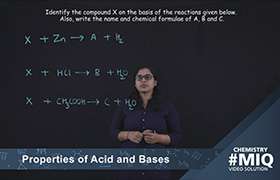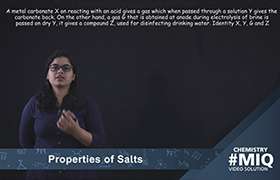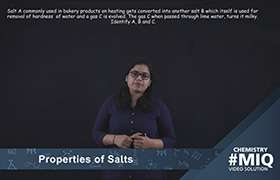CBSE Class 10 Answered
The most common indicator is found on "litmus" paper. It is red below pH 4.5 and blue above pH 8.2.
| Color | Blue Litmus | Red Litmus |
| Acid | turns red | stays same |
| Base | stays same | turns blue |
Other commercial pH papers are able to give colors for every main pH unit. Universal Indicator, which is a solution of a mixture of indicators is able to also provide a full range of colors for the pH scale.
A variety of indicators change color at various pH levels. A properly selected acid-base indicator can be used to visually "indicate" the approximate pH of a sample. An indicator is usually some weak organic acid or base dye that changes colors at definite pH values. The weak acid form (HIn) will have one color and the weak acid negative ion (In-) will have a different color. The weak acid equilibrium is:
HIn --> H+ + In-
For phenolphthalein: pH 8.2 = colorless; pH 10 = red
For bromophenol blue: pH 3 = yellow; pH 4.6 = blue
Litmus
Litmus is a weak acid. It has a seriously complicated molecule which we will simplify to HLit. The "H" is the proton which can be given away to something else. The "Lit" is the rest of the weak acid molecule.
There will be an equilibrium established when this acid dissolves in water. Taking the simplified version of this equilibrium:
![]()
![]()
The un-ionised litmus is red, whereas the ion is blue.
Now use Le Chatelier's Principle to work out what would happen if you added hydroxide ions or some more hydrogen ions to this equilibrium.


